Are you interested in learning more about the philosophy and science of geriatric emergency medicine, but struggling to find online resources? If so, this essay is for you because an expanding array of open access online resources now exist whether your preferred flavor of learning is social media or traditional peer-reviewed manuscripts. Increasingly, the old-world research manuscripts intermingle with the millennial generation’s podcasts, blogs, and social media streams, so you’ll probably find something that interests you.
Anyone can set up a free Twitter account and begin “tweeting”. When an individual or organization sets up a Twitter account, they select a name that is called their “Twitter handle”. For example, I have two professional Twitter accounts and my Twitter handles are @GeriatricEDNews and @SAEMEBM.
Tweets are limited to 240 characters, so grammatical efficiency is essential. These messages can contain hyperlinks, photos, or videos, as well as “tags” to other individuals on Twitter. By tagging another Twitter account, that individual or organization will receive a notification that they have been mentioned in a tweet and can delete, respond, or retweet. Once you have a Twitter account, you can tweet from your smart phone, pad-device, or computer. You can choose who to follow or unfollow, and you can check your Twitter messages as frequently or infrequently as you wish.
Twitter is essentially an electronic network for your friends, family, or professional colleagues. Best practices for setting up your Twitter feed include building your profile with visuals and pertinent biographical information and engaging your community professionally as if they were in the same room chatting with you. You can use your Twitter profile to simply observe others’ tweets, but actively participating in discussions and occasionally posting your own original tweets is far more rewarding. You can connect with your specialty colleagues who you may have never met in-person, and you can see research as soon as it is accepted many months before appearing in the journals. If you are a researcher, you can also promote your own publications and raise your AltMetric portfolio for promotions.
Many geriatric emergency medicine champions are already on Twitter. Table 1 provides a list of some of those individuals and organizations that I follow.
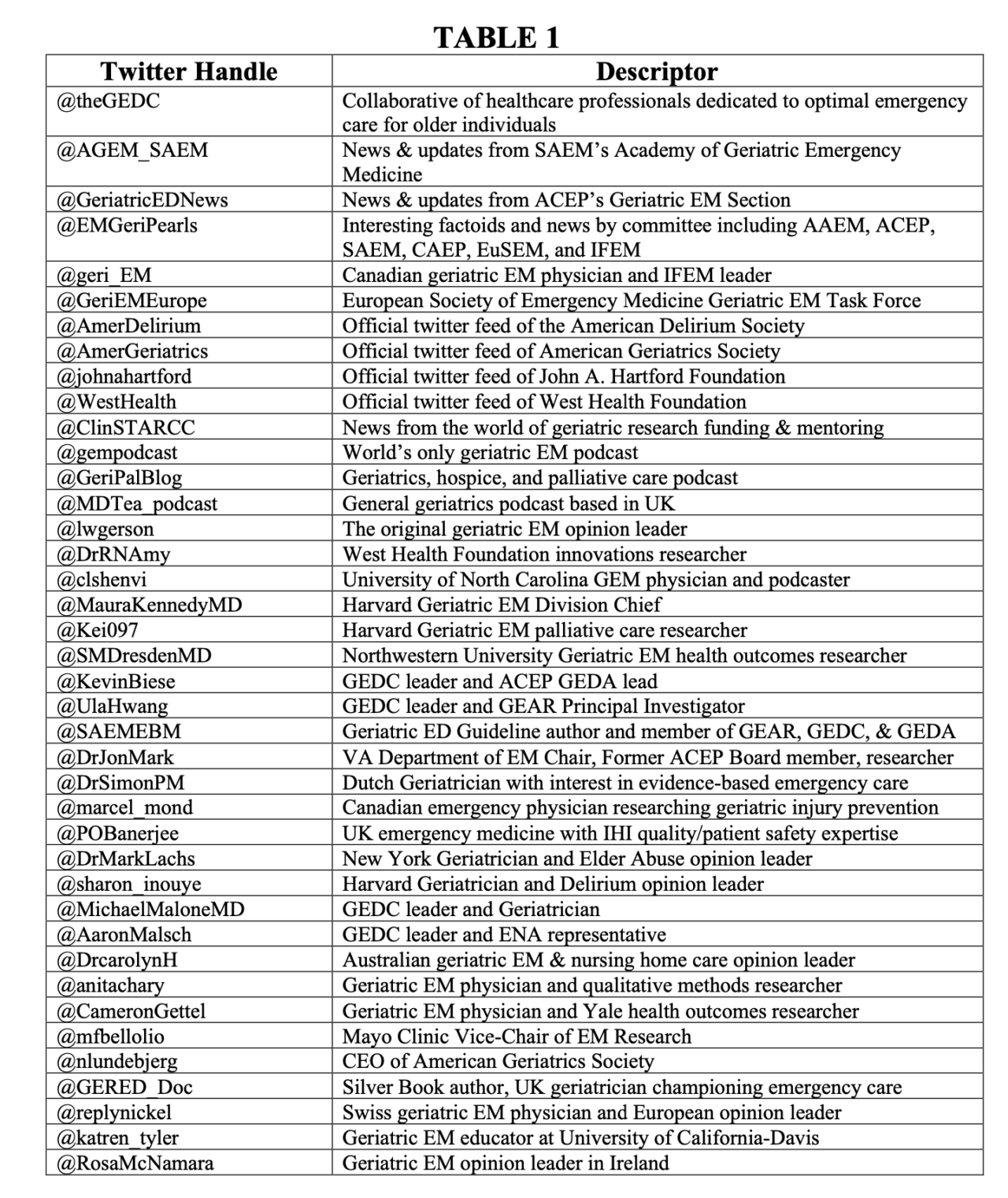
Table 1 is but a small sample of the wide world of geriatric EM on Twitter – I actually follow 3791 twitter handles on @GeriatricEDNews. One approach to identifying others to follow is to first follow one or more of those in Table 1. Next, review who those Twitter handles are following and who is following them. For example, Figure 1 shows a screenshot from @GeriatricEDNews demonstrating how to see who I am following (green arrow) and who follows me (red arrow).
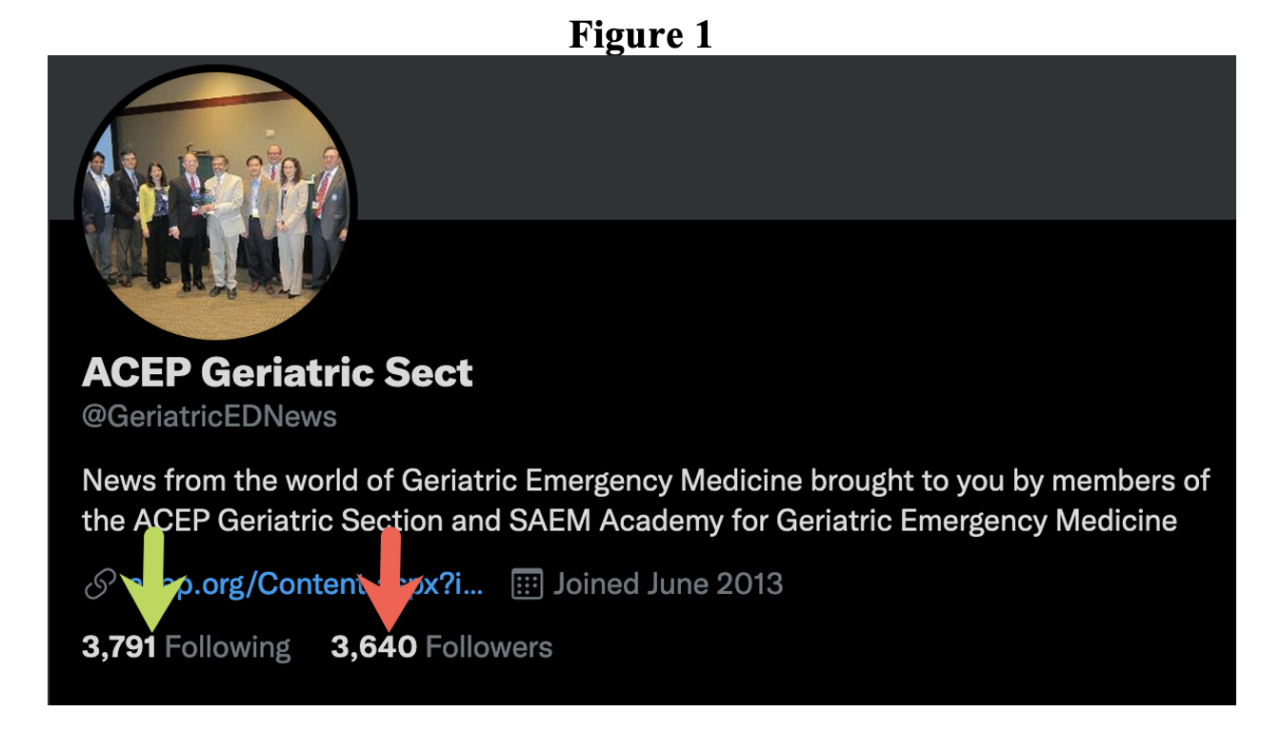
Using the example of a recent Geriatric Emergency care Applied Research Network manuscript in Academic Emergency Medicine, Figure 2 provides another approach to quickly identify active Twitters using journal’s AltMetrics features. First, find the “Information” tab on the right (Figure 2a). Once you’ve clicked the “Information” tab, you can click the AmScore (Figure 2b) and you’ll see (Figure 2c) the social media tweets, blogs, and Facebook posting that included the article’s URL. By selecting “Twitter”, you’ll see the full range of individuals or organizations tweeting about that manuscript. You can quickly find a geriatric EM Twitter community that aligns with your interests using these strategies.
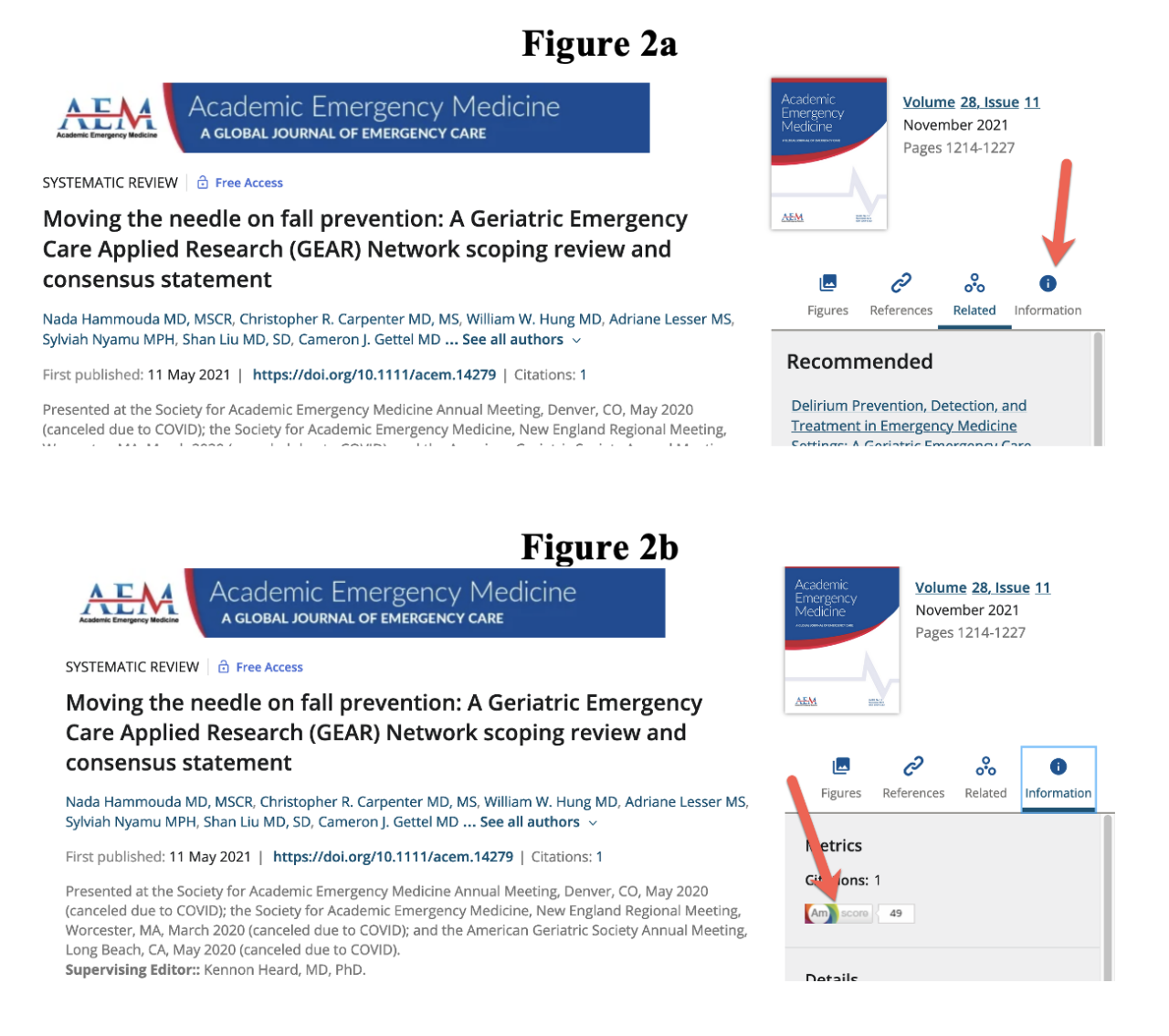
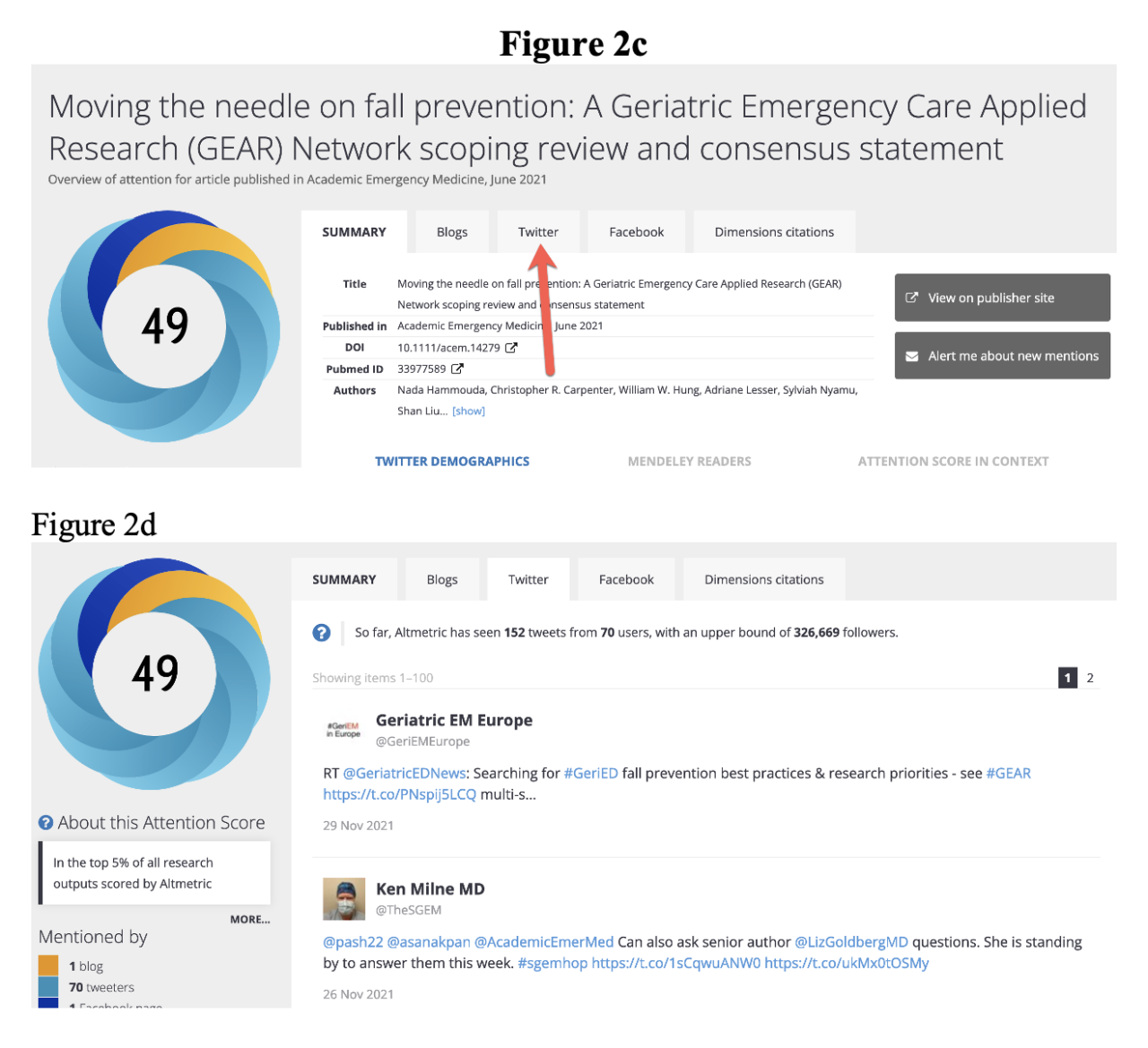
Blogs
Twitter is not the only circus in the social-media town. The geriatric emergency medicine community is also building online resources that include blogs and podcasts. Most of the podcasts include an online blog and I’ll review podcasts next. In my opinion, the cream of the crop blog is GeriEM.com (Figure 3). This website designed by GEDC faculty Dr. Don Melady, and funded by the Schwartz/Reisman Emergency Medicine Institute, provides a multi-disciplinary perspective that includes emergency physicians, nurses, physiotherapists, and pharmacists while problem-solving real-world geriatric cases. While earning free CME, visitors to this online learning resource can learn from others who have left their perspectives or approaches to providing high-quality geriatric emergency care as free text responses.
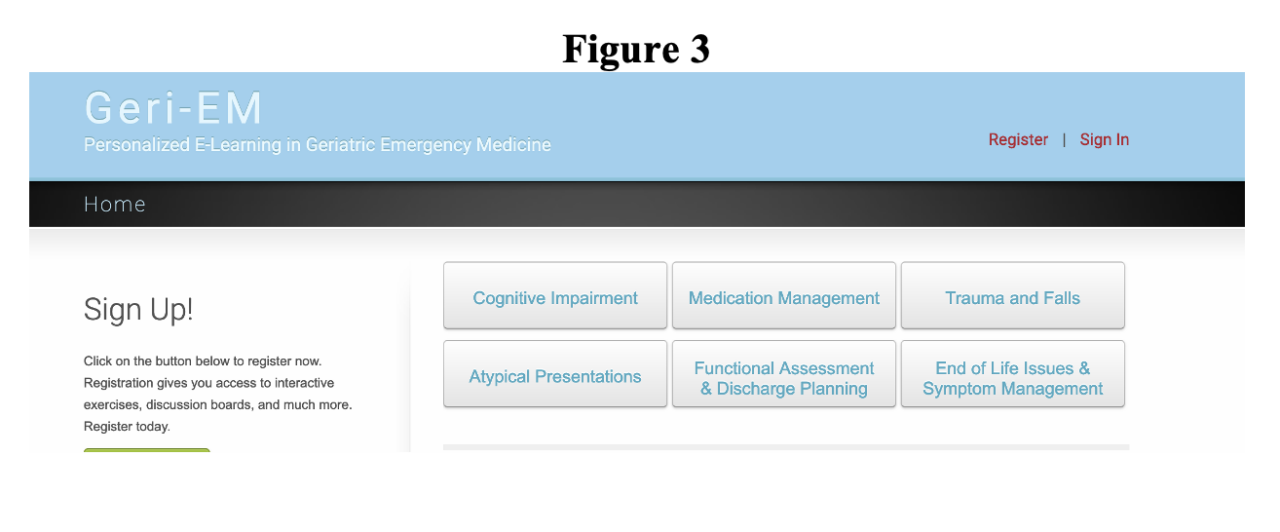
Dr. Melady also created https://geriatric-ed.com/ as a resource for healthcare leaders to understand the value of geriatric-friendly emergency care. These leaders may include nursing or physician C-suites, policy-makers, or patient advocacy organizations.
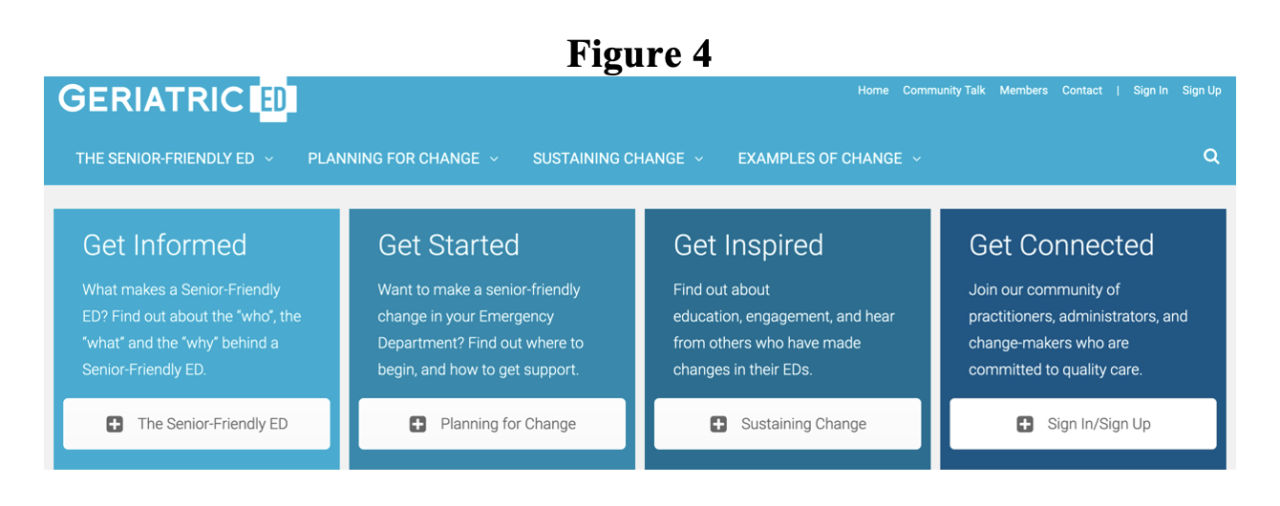
Podcasts
Some learners prefer audio learning or a blend of educational peer-review with entertaining banter (“edutainment”). Although hundreds of podcasts exist in 2022, only one focuses solely on geriatric emergency medicine. GEMCast developed and led by Dr. Christina Shenvi (@clshenvi) since 2015, has dozens of high-quality 30-minute discussions with a range of experts. Another podcast that has been a consistent supporter of Geriatric EM is the Skeptics Guide to Emergency Medicine (SGEM) led by Canada’s Dr. Ken Milne (@TheSGEM). Whereas GEMCast is conversational, SGEM typically critically appraises a new manuscript using evidence-based medicine principles. Dr. Ken Milne also includes a blog with each podcast, where listeners can post questions or comments ad infinitum after the podcast is posted. Table 2 provides a handful of links to some of the representative podcasts from both sources. Other podcasts focusing on general geriatrics also exist including the UK’s MDTea and the Journal of the American Geriatric Society’s GeriPal.
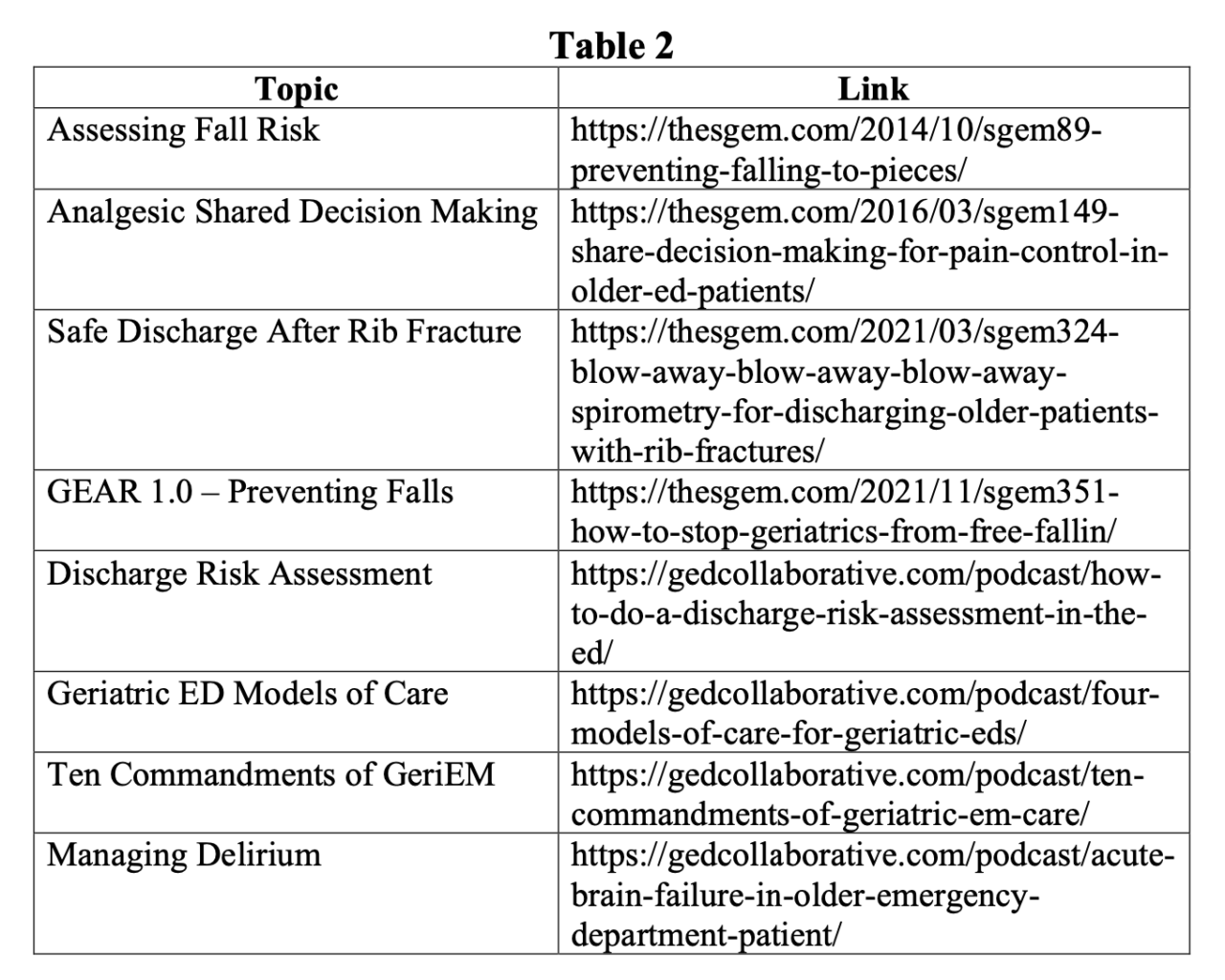
A rapidly expanding community of online resources exist. The first part of the journey is to step online and explore these sources. A more representative world of internet connectedness requires your involvement, so here’s hoping you take that first step!
